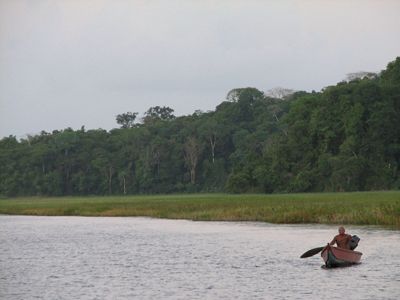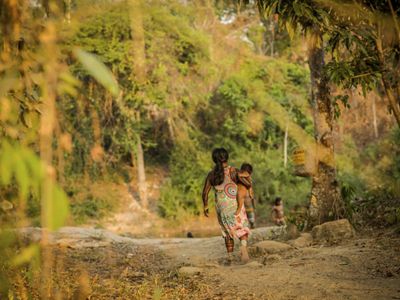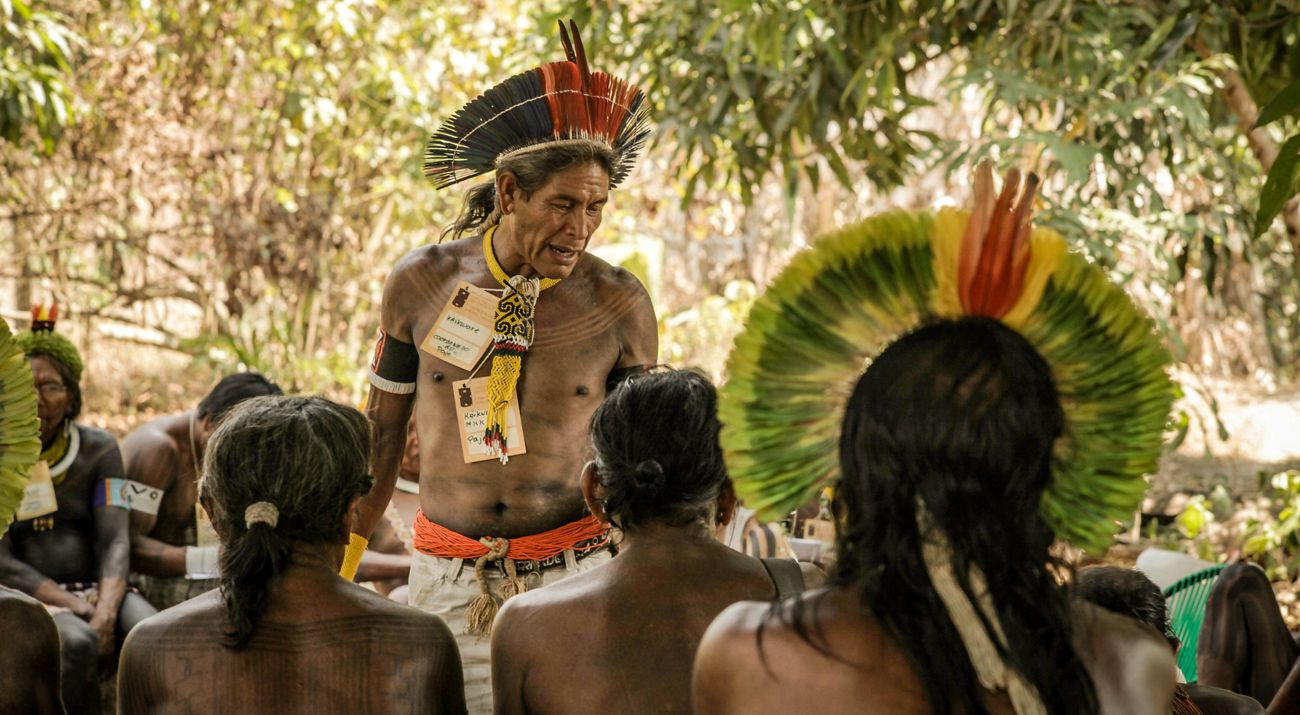
He walked 10 days through the thick of the Amazon rainforest to join the meeting. He once lived closer to the village’s community center, but his kids are grown and he and his wife decided to move to the northern edge of the territory.
They moved so far away that he only speaks his native Wajãpi language and has forgotten how to speak Portuguese—a language he insisted upon teaching the tribe long ago.
It was an important couple of days, and he wasn’t going to miss them. Young members of the Xikrin and Parakanã tribes were coming to the Wajãpi village for the first time to learn about each other and the challenges they face—forest management, population growth, education and working with their neighbors.
The Nature Conservancy sponsored this learning exchange and has been working with tribes across the Amazon in similar ways since 2001. Through bringing tribes together and working with local governments, the Conservancy hopes to strengthen indigenous conservation and land management across Brazil while ensuring sustainable livelihoods.
“Indigenous territories occupy over 300 million acres in Brazil, comprising 22 percent of the Amazon and many of its best-preserved areas,” said Helcio Marcelo de Souza, the Conservancy’s Indigenous Program Coordinator. “We believe partnering with indigenous peoples offers one of the most socially responsible and highest-leverage opportunities to address the major drivers that impact the enormous Brazilian Amazon.”
The Nature Conservancy is working with indigenous groups and organizations, governments and other partners to:
- Support on-the-ground conservation in Amazon indigenous lands, creating models that can be successfully replicated across the country and the region.
- Help indigenous communities identify and develop income-generating alternatives, ensuring they are compatible with the conservation of their lands and waters.
- Train indigenous leaders in environmental and territorial management, fostering their effective participation in governmental budgeting and policymaking.
- Strengthen indigenous organizations, to support the development of stable financing mechanisms for conservation in Brazil’s native lands.
“We’re honored to be working with Amazon indigenous peoples and to be a part of their successes,” Helcio said. “In coordination with the Amazon's largest indigenous coalition, we launched the Amazon Indigenous Training Center, which is aimed at giving young indigenous leaders the technical and political tools to make conservation happen. To date, 115 young men and women have graduated and taken their knowledge back to their communities.”

Additional successes include:
On-the-ground conservation: With support from The Nature Conservancy, the indigenous people of Oiapoque, in northern Brazil, are discussing, designing and promoting conservation of key local resources, such as river turtles and açaí berries. These activities also create income-generating alternatives for local communities. In 2012, Oiapoque was selected by Brazil’s government as a reference area for the country’s National Policy for Environmental Management in Indigenous Lands, and will serve as a model for native territories across Brazil.
Policy-making: The Nature Conservancy is working with the Brazilian government and local indigenous organizations to develop the country’s National Policy for Environmental Management in Indigenous Lands. This will be a milestone for conservation in Amazon indigenous lands, and will elevate our efforts to a much larger scale.
Although native lands in the Brazilian Amazon face real threats, they offer tremendous hope for the future. Largely intact compared to surrounding landscapes, indigenous areas act as sanctuaries for threatened species and boast some of the richest ecosystems in the Amazon.
Through continued and expanded partnerships, The Nature Conservancy envisions strong Amazon indigenous organizations and peoples sustainably managing their lands, while collaborating with governments and other organizations to guarantee the integrity of those areas for future generations.
